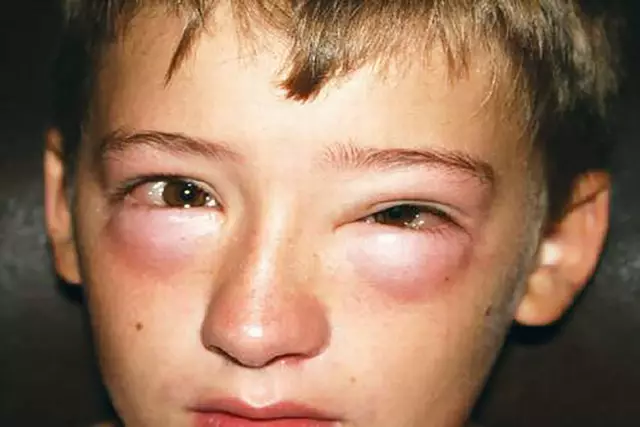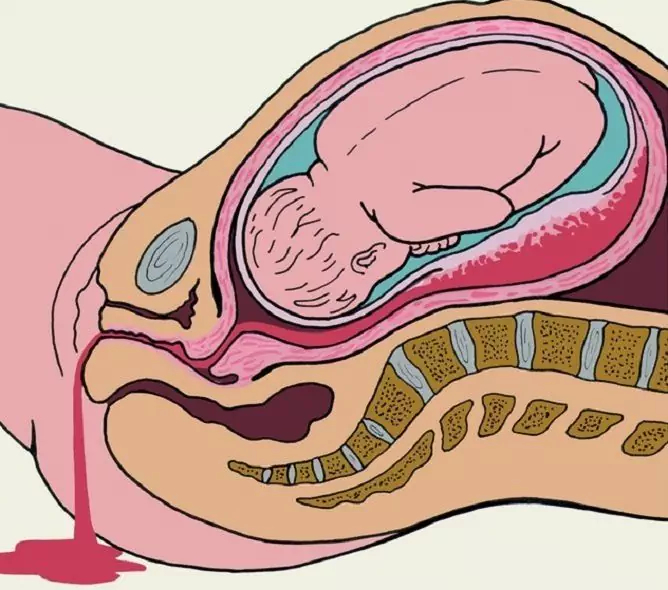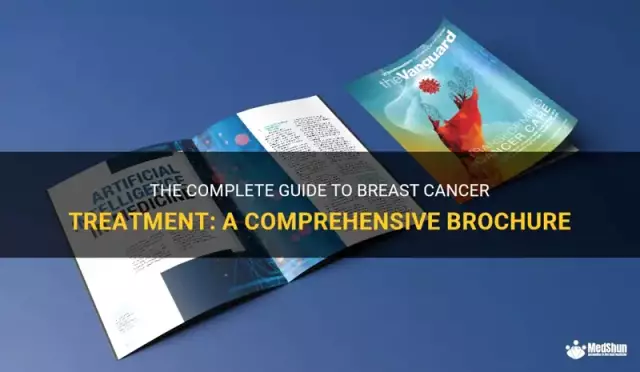- Author Rachel Wainwright [email protected].
- Public 2023-12-15 07:39.
- Last modified 2025-11-02 20:14.
Trichocephalosis
Brief description of the disease

Trichocephalosis is caused by the pathogen Trichocephalus trichiurus (a more familiar name for us is whipworm). Trichocephalosis is accompanied by neurotic symptoms and dyspeptic syndrome. As a rule, when diagnosed with trichocephalosis, the symptoms gradually progress over several years, which indicates a chronic course of the disease.
Sexually mature parasites live in the large intestine. Their anterior part, which is more than half of the total body length, is strongly elongated. The rear end, on the other hand, is short and thick. Whipworm females lay between 100 and 3500 immature eggs per day. Once in the host's body, they concentrate in the intestines, where they further develop to larvae. The latter penetrate into the surface layers of the mucous membrane of the organ and damage it, provoking trichocephalosis. Note also that the whipworm parasitizes only in the human body. The main source of food for it are the cells of the intestinal mucosa and the blood of the host.
The danger of trichocephalosis is that the average life span of its pathogens is 5-6 years. During this entire period, parasites damage the intestines, which affects the work of other systems and organs. In our country, trichocephalosis in children and adults is regularly detected in the regions of the Central Black Earth Region and in the North Caucasus. By the way, in terms of the number of cases, this infection ranks second after ascariasis.
Pathogenesis
Vlasoglavs damage the intestinal mucosa. Due to the penetration of microbial flora and toxins into the wounds, inflammatory processes begin to develop in humans. In addition, damage to small vessels in the walls of the colon and small intestine provokes anemia. The toxins that are released during the vital activity of pathogens affect all organs and systems. Trichocephalosis affects the nervous system the most. For this reason, patients with trichocephalosis often experience a variety of functional and neurological disorders that significantly reduce the quality of life.
Symptoms of trichocephalosis and the clinical picture of the disease
Symptoms of trichocephalosis are varied. Their intensity depends on the number of parasites and the state of the host's immune system. Chronic diseases and concomitant pathologies lead to the development of severe forms of trichocephalosis, and if such trichocephalosis begins to develop, the treatment will inevitably be long and will require several courses of therapy.
It should be noted that in some cases trichocephalosis is asymptomatic. This fact complicates the early diagnosis of the disease and provokes the development of severe complications.
With severe clinical symptoms of trichocephalosis, patients most often complain of various pathologies of the gastrointestinal tract and the nervous system. Typical patient complaints are related to:
- nausea, vomiting;
- decreased appetite;
- stool disorders (as a rule, there is a long, persistent diarrhea);
- pain in the right iliac region, often resembling cramping pain attacks with appendicitis.
As you can see, trichocephalosis does not have any pronounced characteristic features. Its manifestations are similar to those of many other infections, therefore, qualified laboratory tests are needed to make an accurate diagnosis. This is a rather important point. The health of a person depends on how soon the diagnosis is made, since uncontrolled diarrhea mixed with blood and mucus dramatically worsens the patient's well-being, and trichocephalosis in children often leads to rectal prolapse. As the infection develops, patients begin to complain about the symptoms of trichocephalosis from the nervous system: headaches, fainting, convulsions, irritability, sleep disturbances, increased aggressiveness.
Diagnosis of trichocephalosis
Diagnosis of trichocephalosis involves laboratory tests of feces for the presence of helminth eggs in it. Clusters of mature individuals can be detected with conventional sigmoidoscopy.
Trichocephalosis treatment

In the treatment of trichocephalosis, naphthamon is used to kill parasites. The total dosage of the drug depends on the age of the patient and the state of his immune system. In some cases, naphthamon can be successfully replaced with metendazole, but in either case, it is necessary to monitor the effectiveness of the courses carried out and adjust the dosage of the drug if there is no positive effect. Stool samples are taken 2 and 4 weeks after starting treatment.
Disease prevention
The symptoms of trichocephalosis usually appear in those people who live near damp, darkened places that are contaminated with human excreta. To prevent infection, you must:
- protect the soil from faecal contamination;
- strictly observe the basic rules of personal hygiene;
- thoroughly wash vegetables and fruits before use;
- boil water taken from open reservoirs and wells.
YouTube video related to the article:
The information is generalized and provided for informational purposes only. At the first sign of illness, see your doctor. Self-medication is hazardous to health!






